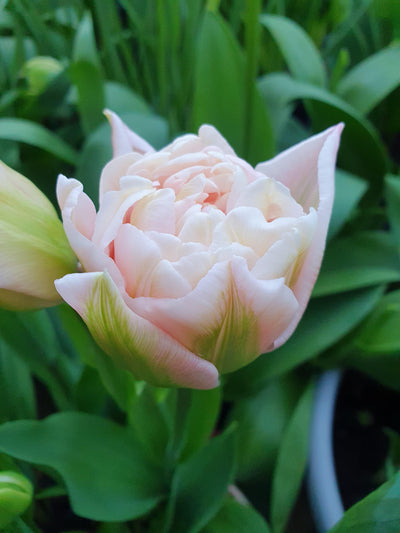Gardening in a heatwave
With soaring temperatures across the UK at a record high so far this summer, unsurprisingly us gardeners are struggling to cope! What ails more, however, are our plants - with the heat taking its toll on flowers and vegetables alike. Some days the plants seem a bit like us, tired and ready to collapse!

Climate change is really impacting the temperature of our planet and this hugely influences the way we garden, if this weather continues perhaps we may be forced to substitute cottage garden favourites for drought tolerant alternatives. But for now, there are a few steps that can be taken to ensure our favourites don’t fall victim to the scorching sun. Gardening is often about looking to the future, but sometimes we have to focus on the here and now in order to make the best of our gardens this summer, despite the weather.

In a heatwave, timing is everything. The mid-day and afternoon sun is the strongest, and this is what will have the greatest effect on the plants (and the gardener!) All watering, deadheading and feeding should be done early in the morning, or in the evening. This is when the temperature and UV radiation are at their lowest, therefore there will be less evaporation and any water will be allowed to soak into the soil. A plant will go into stress when deadheaded, pruned or planted out in the heat, so it is important that any gardening is done out of the afternoon sun. This will prevent wilting and substantially improve the health of the plant.
During a time of soaring temperatures it is imperative to keep all planting out, pricking out and sowing to a minimum, as you may struggle with germination and young seedlings may perish if transplanted in the scorching heat. As a gardener you will be itching to do all you can in the garden at this time, so focus your attention on watering.

When watering, it is best to water for longer more infrequently then little and often. In contrast to popular belief, giving everything a small splash a day could be detrimental to the health of a plant. By only giving a border, flower pot or raised bed a small amount of water, the roots of the plants will grow up towards the surface in order to reach the available moisture. The following day, these roots will be baked by the sun due to their proximity to the soil’s surface. This will lead to even more water loss, so you may as well have not watered at all! To contradict this, giving your garden a saturating soak every few days will allow the water to reach the roots of the plants, causing them to grow downwards (rather than up). This will allow the roots to not only remain hydrated, yet also be protected from the sun’s damaging rays.
Perhaps the most crucial and demanding watering tasks during hot summer weather are containers and raised beds. In order to prevent a pot drying out, it is best to move it to the shade, where less moisture will be lost through evaporation. However, this may not always be possible when gardening primarily in containers, or in a small space. Smaller containers dry out much faster than larger ones, so opt for larger pots when planting displays of thirsty summer bedding. However, often the aesthetic of varying pot sizes is sought after - therefore in this instance displays must be soaked daily. For the the most moisture loving of container plants, a saucer beneath the pot stops water wastage and allows the plant to drink what it needs. Another (less sightly but extremely effective) alternative is to bury a small pot or upturned water bottle adjacent to the roots of the plant. This can be filled up when watering, allowing the water to reach the roots immediately.
Another important consideration of watering during heatwaves is the carbon footprint associated with your water usage. While the most diligent gardener may give their entire garden a soak, there are some plants for which this is not necessary – like lavender and other Mediterranean herbs. Instead, be more environmentally friendly (and save on your water bills!) by watering just those plants which really need it, such as hydrangeas, annuals and vegetables. Anything newly planted, be it a tree or a perennial, will also benefit from a daily drink as it works double time to try and get its roots established.





Leave a comment